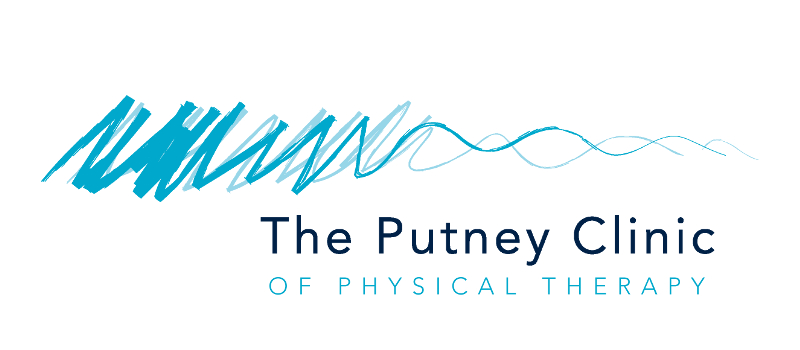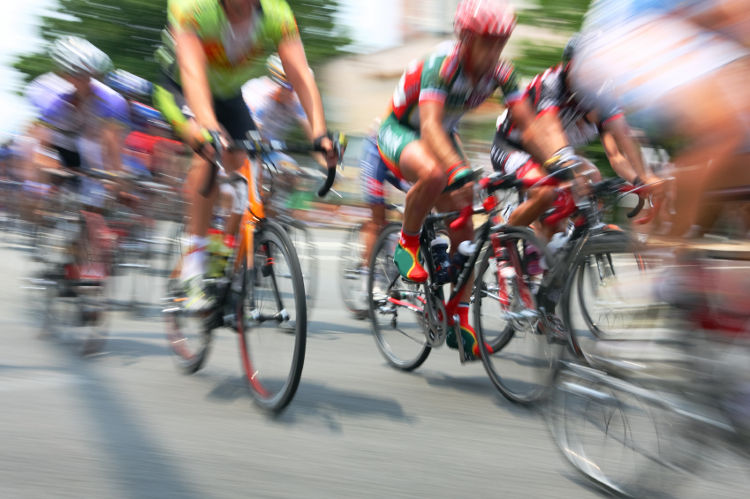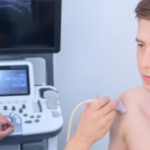There are two main types of cycling injuries. Those caused by falling off (acute injury), which often result in fractures, contusions, abrasions and concussion. And then there are the more common overuse injuries caused by the repetitive nature of cycling including over-training, biomechanical stresses (often due to muscle imbalances) and incorrect bike set-up. Below you will find a selection of the 8 most common cycling injuries, along with tips on how to prevent them from occurring.
BACK PAIN
After knees, the back is probably one of the biggest causes of pain for cyclists, with lack of flexibility and bad posture generally the cause. Hunching forward on your bike, and probably also at work, places strain on your spine, loading structures for prolonged periods of time.
Cyclists’ back pain is often due to mechanical factors. Have your bike properly fitted to your body, then look at your body. Lack of flexibility, such as excessive hamstring and hip flexor tightness can contribute to low back pain. Differences in leg length are common mechanical problems leading to imbalances in the spine. Core strength is very important to avoid low back pain. Core strength comes from a collection of deep muscles both big and small that work together to give you core lumbar and pelvic stability.
SIGNS AND SYMPTOMS
- Deep ache across lower lumbar area with stiffness
- Can refer into buttocks, groin and hip
- Worse after prolonged sitting and on getting up in the morning
COMMON CAUSES
- Mechanical factors like poor bike posture, hunching over handlebars
- Lack of flexibility
- Weak core muscles
TIPS
- Improve flexibility
- Core strengthening
- Alternate postures whilst riding to reduce load on spine
- Check leg length discrepancy
KNEE PAIN
One of the most common cyclist knee complaints is kneecap pain. This is most likely to be patellofemoral pain syndrome (PFPS). PFPS is often worse when walking up and down hills/stairs or sitting for long periods of time. It may include wasting of the quadriceps (thigh) muscles if the injury is old, and tight muscles around the knee joint.
PFPS occurs when the patella (kneecap) rubs on the femur (thigh) bone underneath. It is believed that incorrect tracking (gliding) of the patella over the femur is a significant factor and results in damage to the cartilage underneath the patella. The cause may be external factors like an increase in training, the seat being too low or riding too long in big gears. Internal factors such as poor patella tracking may result from excessive pronation (flat foot), rotation of the lower leg and tight/ weak muscles around the thigh and pelvis.
SIGNS AND SYMPTOMS
- Pain in/under the kneecap
- Worse going up and down hills/stairs
- Worse after prolonged sitting
COMMON CAUSES
- Poor alignment and tracking of kneecap due to muscle weaknesses and tightness
- Increased training intensity, seat too low, riding too long in big gears
- Cleat too near inside of shoe
TIPS
- Address muscle imbalances with strengthening and stretching exercises
- Vary your pedal cadence
- Raise seat height
- Use insert in shoe to stabilise foot and reduce strain on knee
- Move cleat outwards
ACHILLES TENDON PAIN
The Achilles tendon is the tendon at the back of the ankle, connecting the gastrocnemius (calf) muscle to the heel. If your Achilles is sore during or after riding you may have Achilles tendinopathy. Inflammation, micro-tears or compromised blood flow, often caused by overuse, could put a stop to your riding season. There is a whole host of stretching and strengthening options available from your therapist.
SIGNS AND SYMPTOMS
- Pain at back of ankle
- Pain during riding and afterwards
- Tightness and pain after inactivity or on rising in the morning
COMMON CAUSES
- Increased training intensity, hill training
- Lack of flexibility in calf muscles
TIPS
- Strengthen Achilles tendon and calf muscle
- Improve flexibility
- Lower saddle to avoid cycling on ‘tippy toes’ as this loads the tendon
ILIOTIBIAL BAND PAIN
While it is more commonly known as “runner’s knee”, ITB syndrome is another common cycling injury. ITB pain is typically associated with prolonged, repetitive activity. Symptoms include pain on the outside of the knee, tenderness and sometimes swelling. In some cases, pain is felt simply walking or going up and down stairs. You may feel stiff or tight after periods of inactivity.
The ITB is a tendinous fascial band that originates on the iliac crest (hipbone) and attaches to the outside of the knee. As your knee bends and straightens repeatedly, the band can become inflamed by rubbing over bony condyles. Other contributing factors may include tightness of thigh, hip and buttock muscles as well as weak pelvic stabilising muscles.
SIGNS AND SYMPTOMS
- Pain and tenderness on outside of knee
- Occasionally swelling
- Pain walking up and down stairs
- Stiffness after inactivity
COMMON CAUSES
- Repetitive rubbing of band over bony condyles
- Exacerbated by poor flexibility of thigh, hip and buttock muscles
- Weak pelvic stabiliser muscles
- Cleat too near outside of shoe
TIPS
- Raise seat height
- If you pronate (flat-footed) get a wedge/orthotic
- Don’t tuck your knees in too close to stem, as this increases tension on ITB
- Move cleat inwards
- Strengthen weak pelvic stabilisers and stretch ITB, thigh and buttock muscles
HIP PAIN
Possible causes of hip pain in cyclists include bursitis, snapping hip syndrome, impingement syndrome, labral tears or piriformis syndrome. Although the diagnoses may vary, the causes of cycling hip injuries are usually similar and involve over-training, pushing excessively high gears and muscle imbalances. For example, piriformis syndrome is caused by overuse of the gluteal (buttock) muscles, which results in a weak, tight piriformis muscle that can cause sciatica.
SIGNS AND SYMPTOMS
- Deep pain in the hip, thigh, groin and buttock areas.
- Can refer pain into leg with possible numbness and/tingling
COMMON CAUSES
- Overtraining, pushing high gears.
- Muscle imbalances in hip/pelvic region.
TIPS
- Strengthen underlying muscle imbalance
- Improve flexibility
- Gear back and increase cadence
NECK PAIN
Neck pain from cycling usually stems from poor posture and weak muscles. Pain caused by neck hyperextension is made worse by positional issues on the bike, combined with lack of flexibility. Just as you have core stabilisers around your lower back, you have stabiliser muscles called deep neck flexors around your neck to hold your head up.
When your neck stabilisers are weak or fatigue quickly it is left to the trapezius muscle (that goes from the base of your skull to the tip of the shoulder) to support your head as you lean forward. And when these ‘stand-in’ muscles fatigue you can experience pain in the back and sides of your neck. Restore balance by keeping the neck muscles loose and relaxed through a routine of strengthening and stretching exercises.
SIGNS AND SYMPTOMS
- Pain along back and sides of neck
- Can refer pain to shoulder tips and down between shoulder blades
COMMON CAUSES
- Poor bike posture – excessive hyperextension (looking up) of the neck
- Weak stabilising muscles of neck
TIPS
- Strengthen deep neck flexors (stabiliser muscles)
- Lengthen trapezius muscles by stretching
- Shorten your reach on bike
- Raise handlebars
- Vary hand positions whilst riding to change neck postures
HAND PAIN
‘Handlebar Palsy’ is a name given to a condition suffered by cyclists caused by compression of the ulnar nerve at the wrist against the handlebar. It often comes on after long rides, and is not just due to the pressure from your weight but also the transmission of road ‘buzz’ and vibration through the bars. Symptoms include numbness, tingling and weakness over the outside of the hand, little finger and outer half of the ring finger. A feeling of clumsiness in the hand is often reported and pain may be present when moving the wrist.
SIGNS AND SYMPTOMS
- Numbness, tingling and weakness over outside of hand, little finger and outer half of ring finger
- Clumsiness in hand
COMMON CAUSES
- Wrist extended on handlebars for prolonged periods, weight of rider pushing through wrist and vibrations from road applies pressure to ulnar nerve
TIPS
- Alternate hand positions during ride
- Shorten stem and sit up more to reduce weight on wrists
- Gel padded gloves and padded handlebars reduce pressure
BURNING FEET (METATARSALGIA)
Painful burning of the ball of the foot (a.k.a. “hot foot” or metatarsalgia) is usually a result of hot weather and/or poorly fitting shoes on long, hilly rides. Pressure can pinch nerves in one or both feet.
SIGNS AND SYMPTOMS
- Painful burning feet
COMMON CAUSES
- Long hilly rides
- Hot weather
- Tight shoes (compressing nerves and impeding circulation)
TIPS
- Wider shoes
- Move cleats closer to the heel to reduce pressure on forefoot
- Larger platform pedal
- Supportive inner soles and thermo-regulating socks
CONCLUSION
Many cycling overuse injuries can be prevented, remember A–B–C. Be assessed for underlying ALIGNMENT issues such as muscle weaknesses, flexibility, leg length discrepancies and being flat-footed. Then check you have the correct BIKE set up, correct technique and cycling posture. Finally, CONDITION yourself with appropriate strengthening and stretching exercises and progress your training moderately and always, always listen to your body!
APPOINTMENTS
If you are a keen cyclist and are experiencing any of the problems described above, why not make an appointment to see one of team of Osteopaths, Physiotherapists or Sports Injury Physician. Appointments can be booked online or by calling us on 020 8789 3881.







